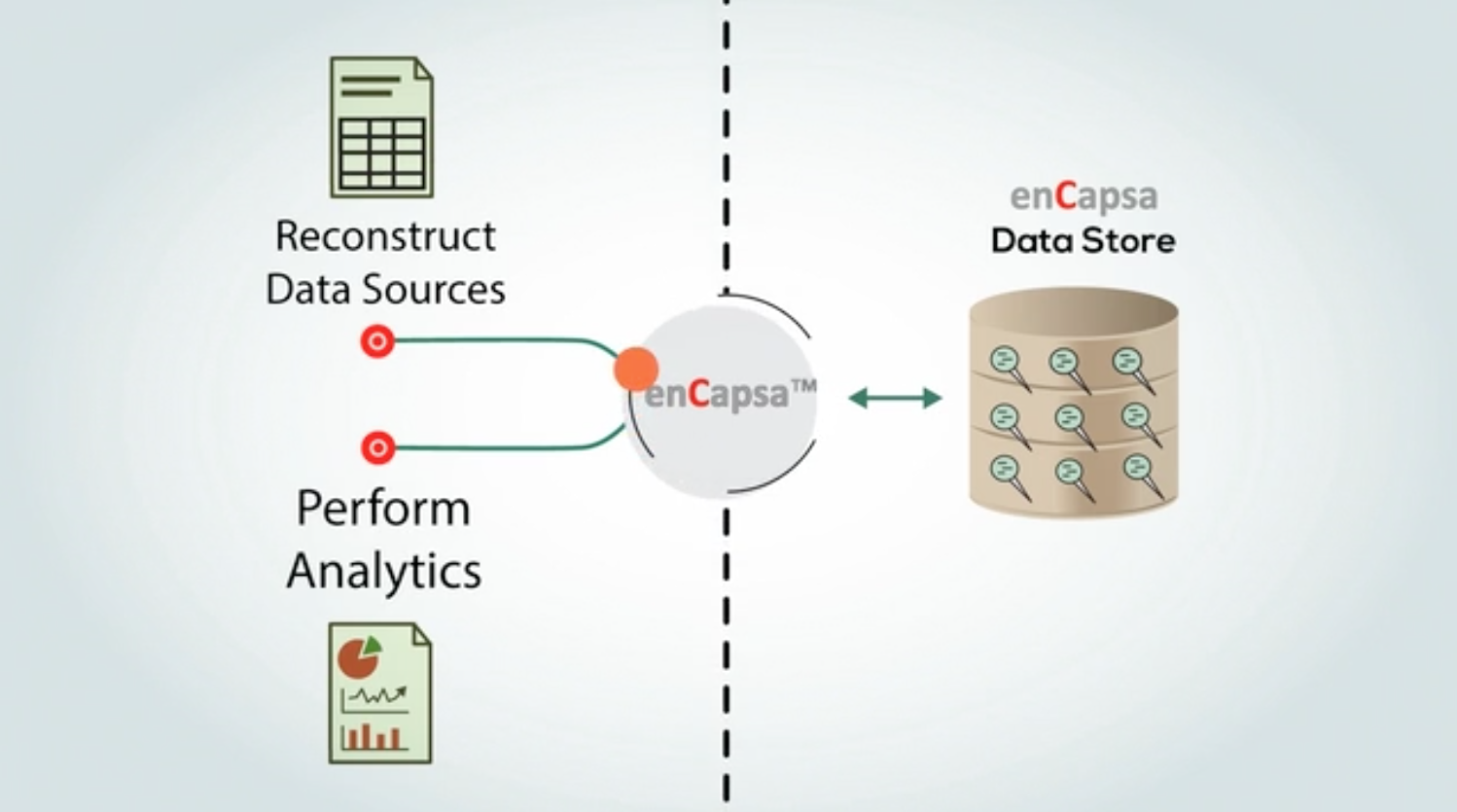enCapsa Objects?
enCapsa Objects empower businesses and individuals to integrate, manage, and analyze data with exceptional efficiency. This transformative approach, known as enCapsulation, redefines data management by converting conventional structures into dynamic tuple-based objects also called DSCs. These objects are stored within a unified framework, elevating data management, accessibility, and integration to new levels of efficiency and flexibility.
How do they work?
enCapsa Objects work as a comprehensive data management and integration solution that empowers businesses to seamlessly handle diverse data sources, perform real-time analytics, and achieve various data-related objectives.
-
Data Integration and Ingestion
enCapsa Web services expose functions to ingest or upload data from various sources, which can include databases, applications, IoT devices, sensors, spreadsheets, and more. This data can be structured, semi-structured, or unstructured.
-
Data Transformation Without Data Mapping
Once data is ingested, enCapsa transforms data using a patented process that removes the need for traditional data mapping. enCapsa ensures that data from different sources is transformed into a unified and consistent format. This step is crucial for harmonizing data from disparate sources.
-
Centralized Data Storage
The transformed data now called enCapsa Objects is stored in a centralized repository. This repository acts as a hub where data from various streams comes together, providing a single data source for comprehensive data management.
Seamless data integration through the power of enCapsa Objects
-
Manual Upload
Users can manually upload data files or documents directly through a user defined interface. This method is suitable for small-scale data transfers and allows users to initiate data encapsulation within the system.
-
File Drops or Watchers
Automated file drops or watchers can be set up to monitor designated directories for incoming data files. When new files are detected, they are automatically ingested and encapsulated into enCapsa.
-
API Integration
Leveraging enCapsa's APIs, data can be programmatically delivered to enCapsa from other applications, databases, or systems. This method offers real-time data integration and automation.
-
Integration Platforms
Middleware or integration platforms like Apache Nifi or Microsoft Power Automate can be utilized to orchestrate data delivery from various sources into enCapsa.
-
Batch Processing
Data can be batch processed and loaded into enCapsa at scheduled intervals. This is particularly useful when dealing with large volumes of data that don't require real-time integration.
-
Cloud Storage Integration
Data stored in cloud-based storage solutions like Amazon S3 or Google Cloud Storage can be seamlessly integrated with enCapsa through their respective APIs.
-
Database Integration
enCapsa can connect with existing databases using appropriate connectors or APIs. This enables seamless data synchronization and integration between the database and enCapsa's encapsulated data storage.
-
Data Connectors
Utilize pre-built connectors or plugins that enCapsa offers to connect with specific data sources like CRM systems, ERPs, social media platforms, etc.
-
Streaming Data
For real-time data delivery, streaming mechanisms such as MQTT or Apache Kafka can be used to push data to enCapsa as it becomes available, ensuring up-to-the-moment integration.
-
Custom ETL Processes
Employ shortened Extract, Transform, Load (ETL) processes to extract data from its source, transform it as needed, and load it into enCapsa.


Encapsulation breaks down data into tuple-based objects called enCapsa Objects or DSCs to create a unified storage framework. This offers multiple advantages:
-
Dynamic Structure
Data is stored in flexible tuple-based objects, moving away from rigid structures.
-
Adaptive Storage
enCapsulation allows data to be stored without predefined schemas, adapting to varying data sources.
-
On-the-Fly Encapsulation
Data can be encapsulated in real-time as it is received, eliminating the need for prior mapping.
-
Unified Framework
enCapsulated data streams are stored within a single, unified framework for streamlined access.
-
Versatile Integration
Encapsulation facilitates seamless integration of diverse data sources and streams.
-
Efficient Retrieval
Agile storage enables efficient data retrieval, analysis, and decision-making processes.